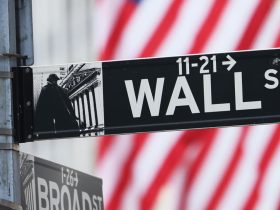Surging bond yields are great for investors looking for income, but a drag for those who already hold bonds in their portfolios, as bond prices fall as yields rise. Dividend funds are a good alternative for income hunters.
Bond yields have been climbing, after a decade at near-zero levels. The 10-year Treasury note’s yield is approaching 5% for the first time since July 2007.
Morningstar has upgraded the process ratings on four dividend exchange-traded funds, giving investors who want the regular income that dividend stocks provide a leg-up in choosing investments.
“If interest rates continue higher, if inflation picks up, it could be a brutal time to be in bonds,” said Bryan Armour, director of passive strategies research for North America at Morningstar Research Services. “And likewise, the opposite could happen. So it’s always good to have multiple sources of income and, in general, having the stock exposure with it will lead to better long-term total returns than bonds historically.”
The funds include the
Schwab U.S. Dividend Equity
ETF (ticker: SCHD);
Vanguard High Dividend
Yield ETF (VYM);
Vanguard Dividend Appreciation
ETF (VIG); and
Vanguard International Dividend Appreciation
ETF (VIGI).
The ETFs are “best in class,” Armour said. “These four strategies do a really good job, not only of identifying different types of dividend companies, but also they’re very strong equity portfolios in their own right.”
The Schwab U.S. Dividend Equity ETF has a 12-month dividend yield of 3.7%. The strategy looks for companies with a long record of paying dividends and solid yield expectations, then scores them on a series of quality metrics.
The portfolio holds 100 stocks, with
Amgen
(AMGN),
Broadcom
(AVGO),
AbbVie
(ABBV),
Chevron
(CVX), and
Merck
& Co (MRK) in the top five. “It’s pretty well-balanced between different sectors,” added Amour. “The tech stocks have obviously done better than healthcare, for example.”
Over 10 years, the fund delivered total annualized returns of 10.79%, placing it in the top one percentile of category peers funds, meaning it outperformed the other 99%. And it has done so with below-average volatility, according to Morningstar. The fund currently ranks as the top ETF in its category by 10-year Sharpe ratio, a measure of risk-adjusted return.
The Vanguard High Dividend Yield ETF has a 12-month dividend yield of 3.25%. It starts with all U.S. large- and mid-cap stocks, excluding real estate investment trusts, and ranks them by their expected dividend yield over the next year. It then selects the higher-yielding half of eligible dividend-paying stocks and weights them by market capitalization.
“it’s a really simple approach that is very effective at leveraging the market’s pricing of the different stocks,” said Armour. The market-cap weighting inclines the portfolio toward larger, more stable stocks.
“If there are value traps that make their way through the portfolio, it holds over 450 stocks, so they’re not going to be that impactful,” he added. “Also if the price is falling, they’re going to actually become a lower and lower percentage of the portfolio. And that has really helped it steer clear of some of the risks of dividend and value investing.”
Total annualized returns of 9% over 10 years place the fund in the top quartile of its peers.
The Vanguard Dividend Appreciation ETF and Vanguard International Dividend Appreciation ETF share the same strategy in different geographies.
Both look for companies with a 10-year history of increasing dividend payments, not just making dividend payments. “That narrows the pool to high-quality, stable businesses,” said Armour. The Vanguard Dividend Appreciation ETF has a 12-month dividend yield of 2.04%, while its international sibling yields 2.24%.
Write to Lauren Foster at [email protected]
Read the full article here













Leave a Reply